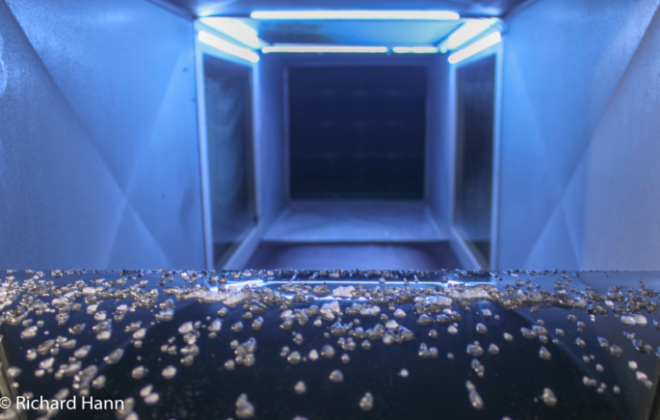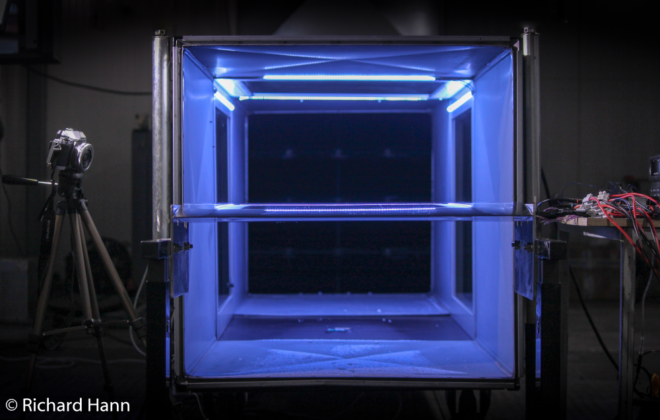A new perspective on reindeer counting in Svalbard
This summer a group of scientists from the University Centre in Svalbard and the Norwegian Polar Institute pioneered a new method to count reindeer in Svalbard using drone technology. Their goal was to count reindeer in Sassendalen using aerial imagery that was obtained from an unmanned aircraft. Counts from drones are then compared with currently used monitoring methods from foot and helicopter.

Drones are becoming a more and more important technology for arctic sciences and can be used for a wide range of applications. In this project, small off-the-shelf drones were used to count reindeer in Sassendalen. The drone takes many pictures from a bird’s eye view of the interesting areas and the pictures are then stitched together into a photorealistic map. Researchers then analyze the map and count the number of animals. During the fieldwork, the drone mapped an area of more than 12km² in Sassendalen including reindeer of all sex and age.

The purpose of this new counting method is to improve the efficiency of reindeer counting in Svalbard. Typically, reindeer are counted either by foot or by helicopter. This latter method can cover larger areas but has a huge environmental impact (wildlife disturbance, noise, and pollution). In the future, drones may be used in combination with these established methods to improve overall efficiency and reduce the environmental footprint.

The Svalbard reindeer (Rangifer tarandus platyrhynchus) is an endemic subspecies of reindeer that is exclusively found in Svalbard. The reindeer colonized Svalbard, most likely from the Russian Arctic, after the last ice age and has since then adapted to the harsh Arctic environment in Svalbard. Compared to other reindeer, the Svalbard reindeer is smaller, with shorter legs, and thicker fur. The Svalbard reindeer almost went extinct by the beginning of the 20th century due to overharvesting, but their population has almost recovered over the last decades. Today, their population size is closely monitored with about 22,000 reindeer in Svalbard.

The work has been funded by the Svalbard Integrated Arctic Earth Observing System (SIOS), the Climate-Ecological Observatory for Arctic Tundra (COAT), and the Norwegian Polar Institute. Future work will focus on refining the drone method and on introducing machine learning for automated post-processing.
Text by Richard Hann, Ingrid Paulsen, Mathilde Le Moullec, Åshild Pedersen, Charlotte van Hazendonk




